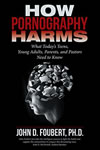All Articles
Accident Investigation & Reconstruction
Investigation & Surveillance
Accounting
Life Expectancy - Life Care Planning
Alcohol, Tobacco & Other Drugs
Manufacturing
Anger Management & Related Issues
Market Research
Animals
Medicine
Banking
Meditation
Child Witch Phenomenon
Neuropsychology
Cosmetology: Hair / Makeup
Obstetrics - Gynecology (OBGYN)
Counseling
Patents
Design
Pharmaceuticals
Discovery & Electronic Discovery
Pharmacy & Pharmacology
Dram Shop Liability
Plastic / Reconstructive / Cosmetic Surgery
Economics
Premises Liability
Education & Schools
Professional Skills
Elder Abuse
Psychiatry
Electrical - Electrocution
Public Speaking
Elevators - Escalator - Automatic Doors
Real Estate
Enterprise Resource Planning (ERP)
Risk Management
Expert Witnessing
Security
Family Issues
Slip, Trip & Fall
Finance
Spirituality
Hazardous Materials
Supply Chain Management
Human Factors
Taxation
Insurance
Terrorism - Homeland Security
Insurance Coverage Analysis
Toxicology
More...

MEDICAL-PAGE ARTICLES MAIN PAGE
. Contact Us if you are interested in having your work published on our website and linked to your Profile(s).
All Articles
Aquatics Safety
Forgery & Fraud
Architecture
Healthcare
Arms - Guns - Weapons
Industrial Hygiene and Safety
Artificial Intelligence (AI) / Machine Learning (ML)
Injury
Attorney Fees
Intellectual Property
Audio Forensics
International Trade
Automotive - Vehicular
Investigation & Surveillance
Boating
Legal Issues
Business Consulting
Linguistics
Child Welfare
Manufacturing
Computer Forensics
Marketing
Construction
Mediation
Cosmetology: Hair / Makeup
Medical - Medicine
Crime Scene Investigation
Medical Malpractice
Crisis Management
Medical Records Review
Design
Medicine
Documentation Examination & Analysis
Meditation
Education & Schools
Metallurgy
Elevators - Escalator - Automatic Doors
Mining
Ethics / Ethical Duties
Pharmaceuticals
Exercise & Fitness
Product Liability
Finance
Psychology
Food & Beverage
Public Speaking
Foreign Affairs - Geopolitics
Recreation & Sports
Forensic Psychiatry
Toxicology
More...
Featured Articles
There are no active articles here at this time. Please use the search bar, try another category, or contact us if you would like to contribute an article.
This Article is unavailable. Contact Us
Search articles by title, description, author etc.
Sort Featured Articles
Featured resources
Doctors and the Law : Defendants and...
by Hiller B. Zobel, Stephen N. Rous
Taber's Cyclopedic Medical Dictionary...
by Clayton L. Thomas (Editor), Robert H., Jr Craven
How Pornography Harms: What Today’S...
by John D. Foubert, PhD
Follow us










